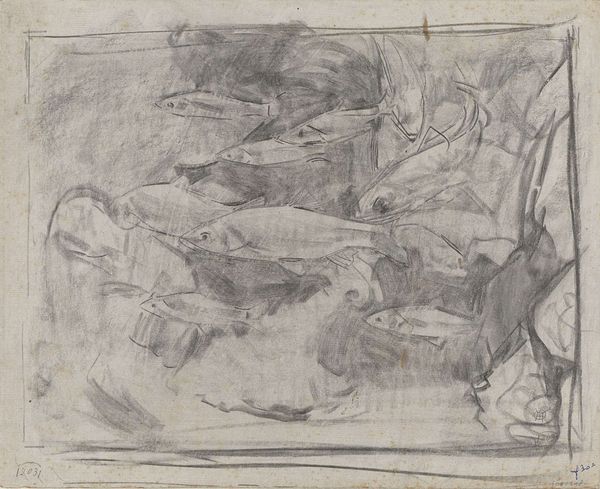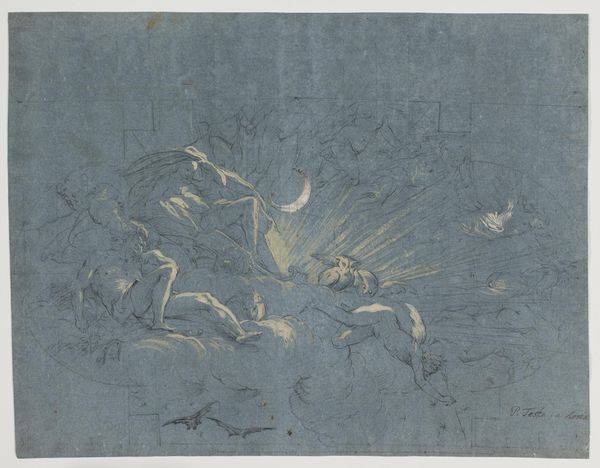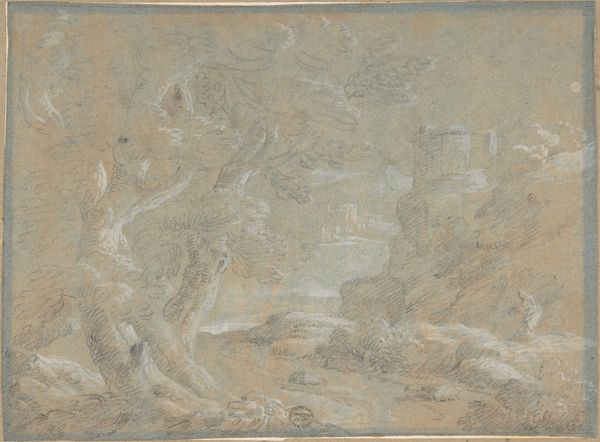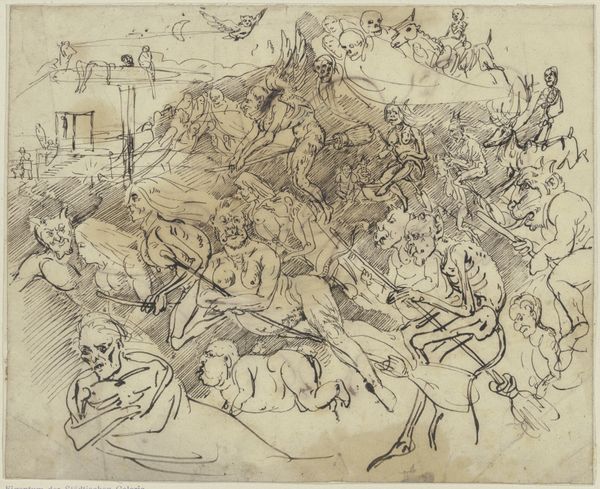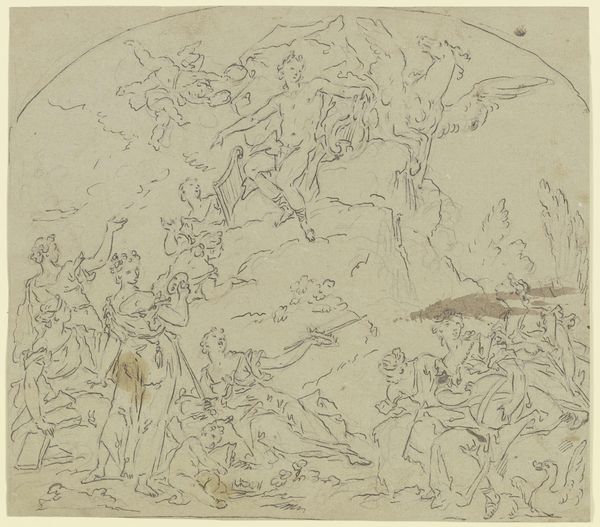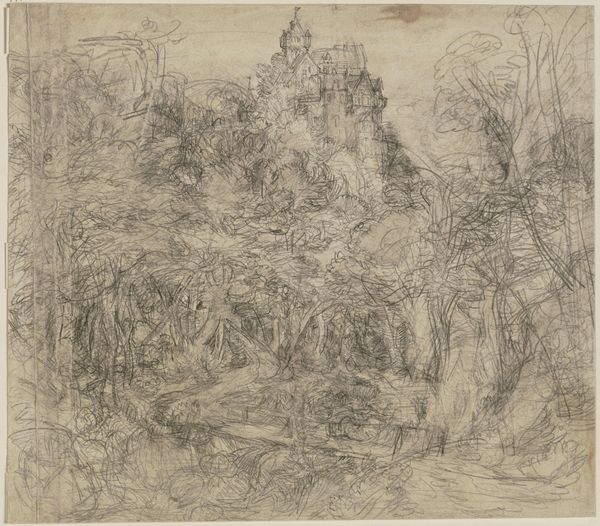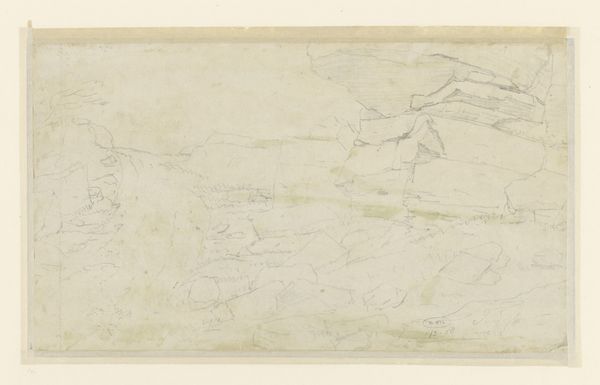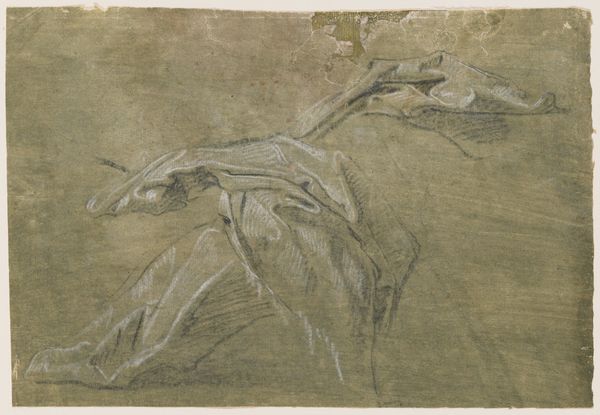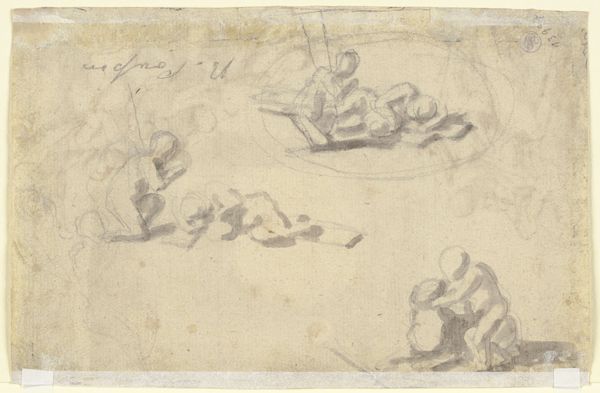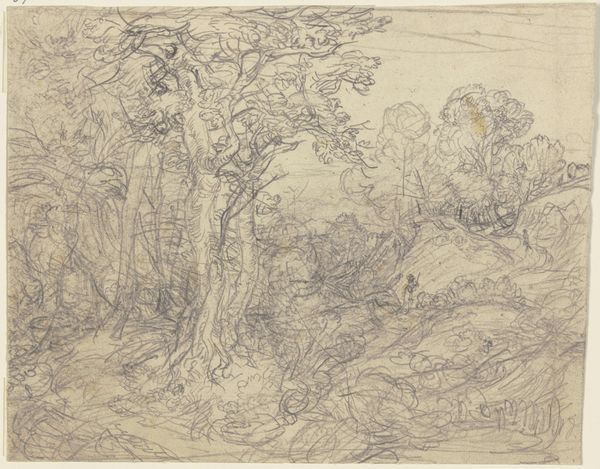
drawing, chalk
#
drawing
#
baroque
#
pencil sketch
#
chalk
#
history-painting
#
academic-art
Copyright: Public Domain
Curator: This drawing, held in the Städel Museum's collection, is by Pietro da Cortona, and it’s titled "God Destroys the Instruments of Martyrdom of Saint Catherine." Editor: My first impression is chaos, really. A jumble of figures and shapes. It feels almost violent, even though it’s rendered in what seems like soft chalk or pencil. Curator: Exactly, a medium such as chalk softens the blow, even as it illustrates such a visceral subject! Cortona's Baroque style often employed preparatory sketches to organize complex narratives, which in this case looks at the legendary Catherine of Alexandria, martyred for her Christian faith. What interests me is the choice of imagery here: Catherine's oppression stands in defiance of modern power structures. Editor: Oppression is definitely communicated, I see instruments of torture splintered mid-air. Symbolically, the breaking of these instruments tells a story about the limits of worldly power. Even if one could read these torture devices as signifiers of worldly violence, those instruments of torture represent a failure of their intended function. The jagged edges suggest divine intervention as well as human cruelty. Curator: This sketch serves as a testament to faith's resilience. Think of the ongoing legacy of patriarchal systems: examining visual narratives such as this through an intersectional lens shows not only their context, but allows modern parallels in gender inequality to appear within the picture's construction of female suffering. Editor: I think beyond the obvious themes, the rising cloud is essential; this shape also evokes the release from earthly constraint. It could represent both divine judgment and a move from human torment. Catherine rises with an air of defiance. I imagine it serves a visual metaphor for spiritual liberation triumphing over brute force. Curator: Indeed! Considering art as a reflection of larger sociological trends allows one to examine questions about representation and power dynamics. The martydom story here isn’t simply about a historical figure; rather it points toward ongoing cultural conversations around religious authority and bodily autonomy in our world. Editor: Studying images of martydom through time, one can better examine faith across the cultural and personal realms. As we trace how similar icons resurface and shift meaning, perhaps their symbolism teaches that a visual motif may continue to speak—but, thankfully, their social force may diminish!
Comments
No comments
Be the first to comment and join the conversation on the ultimate creative platform.
